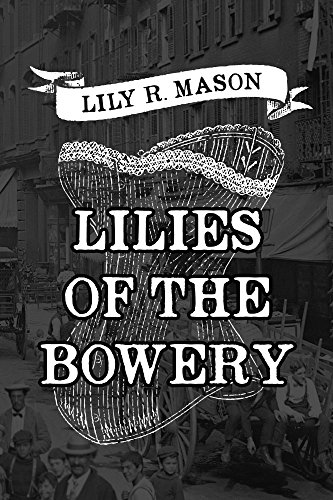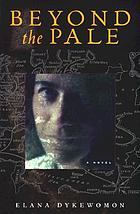Tagged with lower east side
Uptown Thief
book type:
recommendation:
Lilies of the Bowery
Lost Synagogues of Manhattan, Including Shuls from Staten Island and Governors Island, the
The third in Ms. Levitt's series of "lost" synagogues of New York's five boroughs focuses quite a bit on buildings in my neighborhood that formerly housed Jewish congregations. I've lived in three Manhattan zip codes (and one in Brooklyn, if you're curious, 11222). My current 10002 has 22, the one I lived in the longest, 10009 has 14, and the other, 10003 has 4. Levitt covers 32 others, as well, but to me, the book is primarily a Lower East Side party. Most of the buildings she describes in my neighborhoods are familiar, though I wouldn't have guessed that many of them had once been shuls.
author gender:
book type:
medium:
Buried on Avenue B
It's weird when a book takes place in a neighborhood you know incredibly well, but is in a universe you've heard about but don't recognize, populated by alcoholic, bigoted police officers. Buried on Avenue B has a second location, Sarasota, Florida, which is not far from Tampa, where I went to grad school. The people in the Publix grocery stores in Sarasota are depicted as nicer than the ones I encountered in Tampa, but there was one commonality--old men bagging groceries. De Jonge assumes they're doing it for the minimum wage. In my naivete, I want to believe it is for something to do.
author gender:
book type:
medium:
Shadows Still Remain
I read this dude-penned book because my dad recommended it and because the next book in the series includes an encounter with Jennifer Miller, a favorite performer of mine and the person who conducted my wedding ceremony.
author gender:
book type:
medium:
Beyond the Pale
This is such a Rivington Street readalike that it’s hard not to compare the two. Both begin in Russia around the turn of the 20th century and move to the Lower East Side after a pogrom. Both are about young Jewish female union workers and both have lesbian characters, and both depict the Triangle Shirtwaist Factory fire.
“You sound like a capitalist, all excited about machinery,” I said. “Aren’t you afraid that [linotype] will put printers out of work?”
“I was, but now I understand that the more books and pamphlets there are, the more men will read.” He dropped his voice. “And with this machine, we can make up our own pamphlets when the boss is out and melt the evidence before he comes back.” He leaned back in the sunlight, very pleased with himself.
The Williamsburg Bridge was its own sin. Its construction, Lena told me, made hundreds of people homeless when their buildings were torn down. A little like pogrom of progress, burning anything in its path, making Jews take to the roads with everything they owned on their backs, or move in with their relatives and landslayt, crowding more than we were ever crowded in Kishinev.
author gender:
book type:
medium:
recommendation:
Union Square
I've read the book's prequel Rivington Street but hadn't revisited Union Square since I bought it in a used bookstore in Guatemala in 2001. RS is a historical novel, but US reads more like a fictional history. It's full of educational examinations of Jewish life in the 1920s-40s, covering issues like Palestine, Zionism, World War II, communism, and labor politics, but also tells the stories through the lenses of art, fashion, and psychiatry. Tax used oral histories for her research, and the voices sound authentic. To me the most interesting and informative bits are the characters internal and external struggles with the party line and the multi-faceted views on the conflicting Zionist movements. The author does a good job of revealing multiple truths in these contentious topics, but you still have an idea where she's at personally. The sometimes disastrous relationship between the Communist Party and American labor, not to mention the difficulties it creates between father and daughter is sometimes painful to read, but fascinating stuff!
author gender:
book type:
medium:
recommendation:
Dive Bar at the New York Public Library
The East Village's skankiest bar is collaborating with its neighborhood library, the Tompkins Square Park branch of NYPL on an art exhibit: "22 Years on Marz: A Retrospective of Artists from Marz Bar Since 1986." ...
The History of Radical Resistance on the LES
Since this is the Lower East Side Librarian blog, I feel obligated to announce this event about the history of radicals in the 'hood.
LIBERTARIAN BOOK CLUB / ANARCHIST FORUM: The History of Radical Resistance on the LES.
Tuesday, October 9, at 7:30pm
The Living Theatre, 21 Clinton Street, Manhattan
(just south of Houston St.) ...



